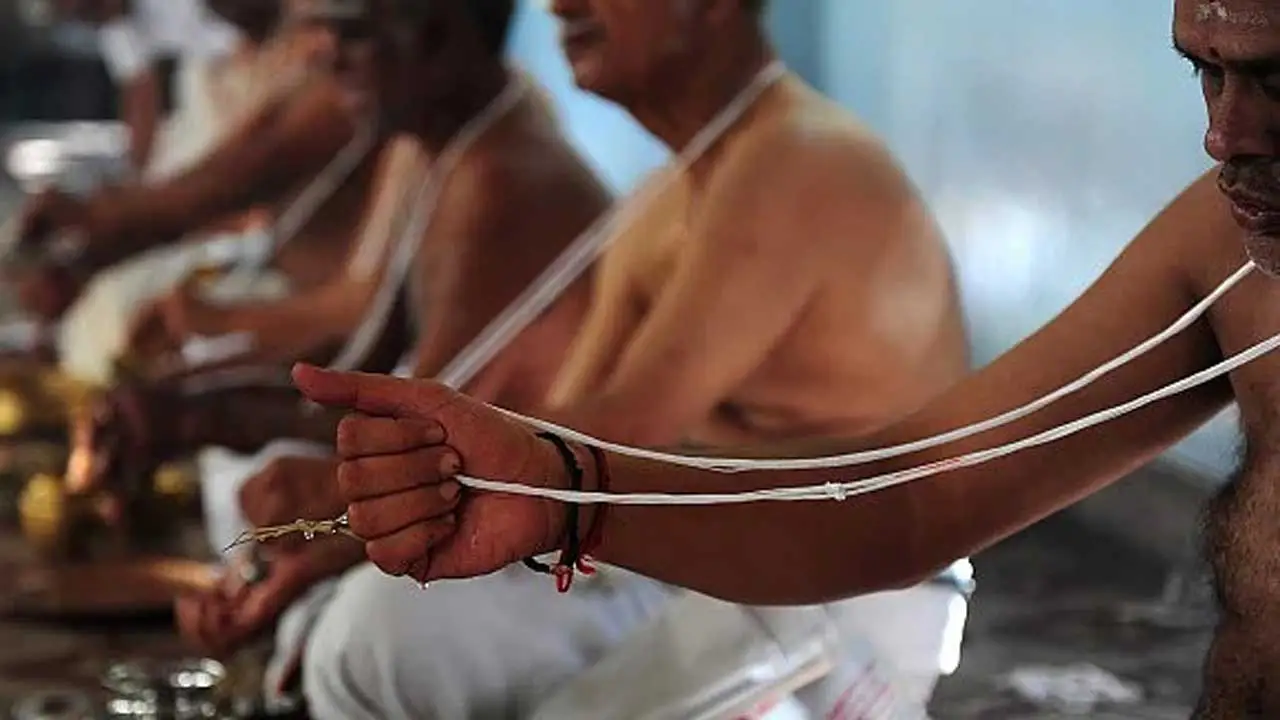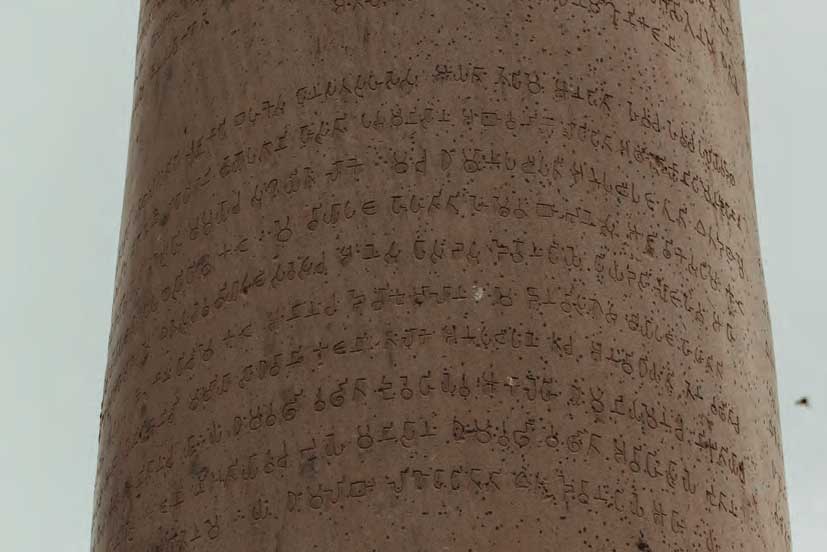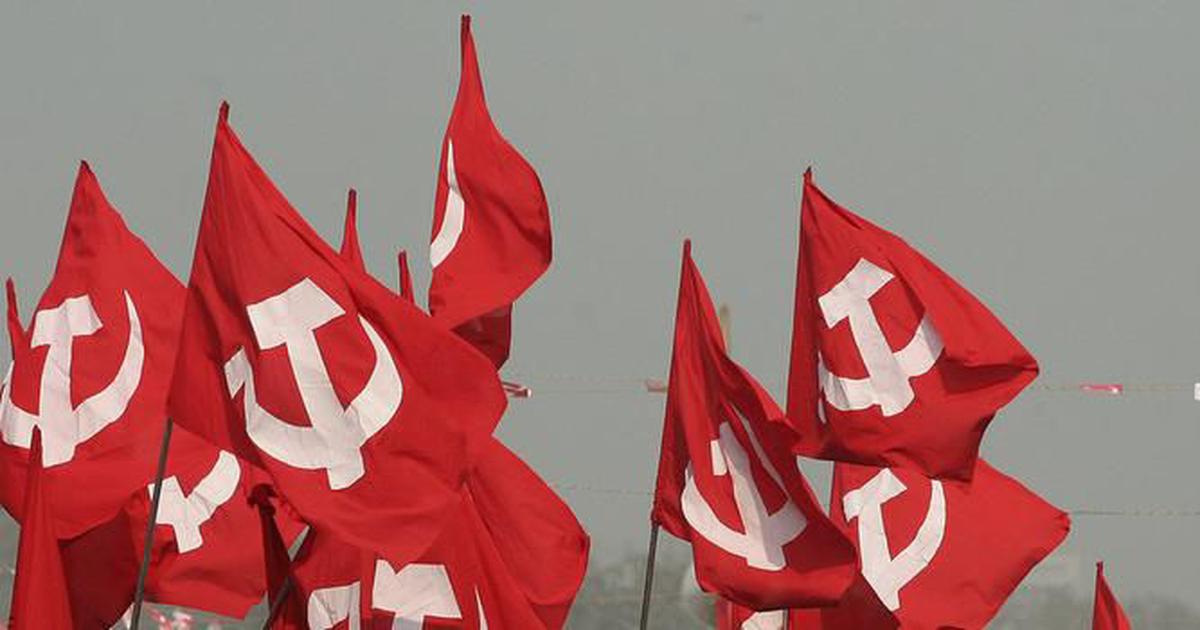A deep respect and veneration for the Vedas is ingrained in most Indians. That is why they readily accept anything when they are told that it is from the Vedas. What is written in the Vedas is accepted as an axiom. There is a shloka, “Vasudhaiva Kutumbakam”, which means that “all those who dwell on this earth are a family”. There is confusion about the origin of this shloka. However, ordinary people consider it as part of the Vedas. It is also believed that the Vedas are Apaurusheya (not written by men) and are the creation of god. Now, something that is of divine origin has to be accepted in its entirety. The Vedas are as important for the Hindus as the Bible is for Christians and the Quran for the Muslims. There are four Vedas (Rigveda, Samveda, Yajurveda and Atharvaveda) and 11 Upanishads. All these books are treated as sources of divine knowledge. Hindus believe that no other religious text in the world can even come close to the Vedas. For centuries, Vedas have been determining the conduct and the rites of the Hindus.
One view is that the rishis who wrote the Vedas were not from India but were Indo-European Aryans, who had barbarically crushed the indigenous Dravidian residents and settled in this land. On this basis, Aryan rishis were branded as outsiders or alien invaders. But there is also a rival contention that the human race originated in the African continent. However, the origin of the human race is not the subject matter of this article. Different religious texts peddle their own theories about how humans came into being. But these theories are not based on any study or exploration but are purely imaginary and speculative.
If we accept the historical view that the Aryans had crushed the indigenous Dravidians and established their hegemony over this land, then we will have to accept that the rishi-munis who wrote the Vedas were foreign invaders. But then, this article is not meant to discuss whether the Aryans were foreigners. Our objective is to discuss the supposed divinity of the Vedas.
There is no unanimity among the scholars as to when the Vedas were written. But some consider Vedas as the oldest literature in the world. That adds to the veneration for them. German scholar Max Muller estimates that the Vedas were written around 1200 BCE. Another German scholar Martin Haug dates the Vedas to 2400 BCE. Balgangadhar Tilak claimed the Vedas were written sometime in 4000 BCE. Some blind believers push the period of the writing of the Vedas even further back in time, as if the greatness of these books is a function of their antiquity. As they say, older the wine, the better it tastes and more intoxicating it is.
Scholars believe that the Vedas were not written by one individual. These were written by many people and continued to be augmented for over 2,000 years.
One generation after another learnt them by rote. Vedic literature exists both in verse and prose. Putting it to paper was considered sinful. Here it would be pertinent to mention that only Brahmins heard the Vedic literature from their gurus and learned it by heart. That is why this literature is also called “Shruti” (what is heard). The knowledge of the Vedas was never imparted to non-Brahmins. The Vedas were considered the most revered body of revealed sacred literature. Their knowledge was kept confined to the select body of Brahmins. Even today, some so-called gurus go to great lengths to preserve the sacredness and confidentiality of these texts. Some deras (sects) make their disciples take an oath that they will keep to themselves the mantra given to them at the time of their initiation. Thus, we can conclude that a select band of people was entitled to hear and learn the Vedic hymns. They were like a valuable ornament which has to be kept safe so that it doesn’t fall into wrong hands. The unworthy were not supposed to hear these hymns. If an unworthy person, by mistake or design, heard these hymns, the punishment prescribed for them by the brahmanical scriptures is well-known. Molten lead was to be poured into their ears.
It is not difficult to imagine how harshly these practitioners of Vedic religion must have treated artisans, who were called the Shudras. The norms formulated on the basis of the Vedic canons made life hell for them. The Vedic canons gave Brahmins a divine status. This was a class which did not work with its hands. All it did was invest the Vedic literature with divinity and sacredness of the highest order. No one can object to anyone being great. But if someone is declared superior, then all others automatically become inferior. And there can be no graver tragedy for any culture.
The Vedas say that a Brahmin can give up idol worship if he wants to, but he cannot abandon Vedic prayers or the system of worship ordained by the Vedas. Even today, there are many believers who are ready to spend huge sums for performing Yagnas and other Vedic rituals and on studying Vedic literature.
The Sanskrit literature that followed the Vedas drew sanction from them. All the streams of Hindu philosophy accord the greatest respect to the Vedas. In fact, the different streams vie with each other in claiming that they enjoy the authority of the Vedas and represent Vedic thought. Their claims to superiority are based on their proximity to Vedic ideas and beliefs. Even today, Hindus follow the social, legal, familial and religious norms laid down in the Upanishads and the Smritis, which, in turn, are based on the Vedas. The Hindu civil code that applied to inheritance, adoption and so on during British rule was also based on the Vedas. Even today, the religious and social activities of the Hindus are governed by the Vedic traditions.

In a nutshell, the Vedas cannot be treated as ancient, dead literature. In fact, the Vedas should be considered the sources of the entire corpus of the literature of the Hindus except what is accepted as fiction. Despite many changes, the traditional Hindu life still reflects Vedic teachings.
The advent of the modern era has brought about major changes but it has not lessened the faith of the Indians in the Vedas. Whether it is a scientist or a rickshaw puller, Indians still hold the Vedas in great reverence. Today’s youth know that the Vedas cannot show them the path to growth and progress but that hasn’t made them lower their faith in and respect for the Vedas. Social activities and religious events are still conducted in keeping with the Vedic stipulations. Whether it is Ayurveda or Yoga, the influence of the Vedas is visible everywhere.
The Indian media is also under the spell of the Vedas. Whether it is the Doordarshan or private TV channels, whether it is an entertainment programme or an informative one, Vedic influence is all-pervasive. All this makes an average Indian believe that the Vedas represent Indian culture in its entirety and that only the Vedas can help one understand the real meaning of Indian culture. Even scientists claim that surgery was very common in ancient India. Prime Minister Narendra Modi has said on many occasions that our ancestors were far ahead of others in terms of scientific discoveries and inventions.
At a convention of the Indian Science Congress in Mumbai some years ago, it was claimed that Agastya and Bharadwaj munis had developed an aircraft that could fly backward and forward as well as sideways. It was also claimed that the pilots of these aircraft wore virus-, water- and shock-proof jackets. For an average Indian, the Vedas are the repository of all knowledge and wisdom and hold the secrets that made India great, and so, they must return to the Vedas. The Rashtriya Swayamsevak Sangh (RSS), the so-called cultural organization, behaves as if it belongs to the Vedic age. It believes that the Vedic India was the real India and that the Vedic age was India’s golden period.
There is no end to the glorification of Vedas. “Let us return to the Vedas” is the common refrain of many. It is being said that the Vedas contain the formulae that can make India the Vishwa Guru. Vedic literature can tell us about the thought tradition of that era and the contemporary civilization. In that sense, Vedic literature is useful. But what is distressing is that these texts are sought to be used for rebuilding a civilization that had made the life of a section of Indian society miserable.
These so-called amazing books could be the pride of any civilization. But efforts to resurrect such ideas and theories of these texts which are not at all compatible with the modern era are laughable. Had the basic thrust of these scriptures been humanistic, who would have questioned them? But if we do not abandon the thinking that led to the ruin of society and instead carry them on our backs as our cultural heritage, we can hardly hope to become a modern nation.
The issue is not only that these mythological texts are being hailed as repositories of Indian culture but also that the texts are cited as the source of maxims that don’t at all figure in them. This is intellectual dishonesty. I would like to discuss one such maxim. It is being claimed that the phrase “Vasudhaiva Kutumbakam” encapsulates the core values and beliefs of the Sanatan Dharma. These words are also etched at the entrance to the Indian Parliament building.
Dr Surendra Agyat says that this maxim is nowhere to be found in the four Vedas and the 11 Upanishads. The word “Kutumbakam” does not figure in the commentaries on the 11 Upanishads.
The word finds a mention in the Sanskrit-Hindi Kosh of Vaman Shivram Apte but Apte hasn’t discussed the etymology of the word. That is because “Kutumbakam” is not a Sanskrit word originally but has been borrowed from Tamil. Dr Agyat explains that the word is made up of two Tamil words “Kudi” (house or home) and “Inbam” (happiness). It underwent a slight change to become “Kutumbakam” in Tamil. It was then adopted by Sanskrit. Many Tamil words entered Sanskrit. But this word did not exist in the Vedic era.
Then, where did this word come from? Dr Agyat says that the word is found in the “Mahopanishad” and in the “Panchatantra” but both these works were written after Shankaracharya’s lifetime. A text does not become ancient only if the word “Upanishad” is appended to its name. Many Upanishads were written in the 20th century. Rajnishopanishad and Allopanishad were written during the rule of Akbar.
It is just not rational to resort to falsehoods to prove that the Vedas are great works of human mind, just as it is not rational to ignore the social inequalities that the Ramayana seeks to justify just because it has Shabri as one of its characters. Mythological literature can tell us how the people of that era thought but when that thinking is valid even today, it dilutes their sacredness. This ancient tradition has caused immense harm to a large section of the people of this country. And that makes it imperative that we question its sacredness. Dr Ambedkar did: He noted that according to the Brahmins, Brahma dwelt in all living beings, and asked if Brahma dwelt in Brahmins, then it dwelt in the Adivasis, the criminal tribes and the untouchables, too, right?
(Translation: Amrish Herdenia; copy-editing: Anil)
Forward Press also publishes books on Bahujan issues. Forward Press Books sheds light on the widespread problems as well as the finer aspects of Bahujan (Dalit, OBC, Adivasi, Nomadic, Pasmanda) society, culture, literature and politics. Contact us for a list of FP Books’ titles and to order. Mobile: +917827427311, Email: info@forwardmagazine.in)
The titles from Forward Press Books are also available on Kindle and these e-books cost less than their print versions. Browse and buy:
The Case for Bahujan Literature
Dalit Panthers: An Authoritative History







